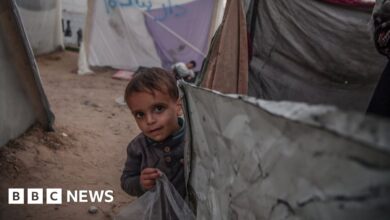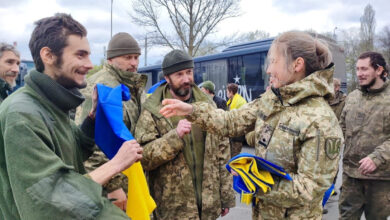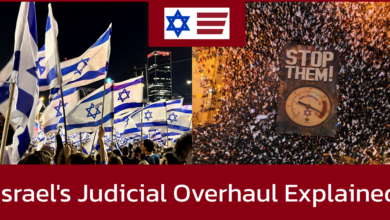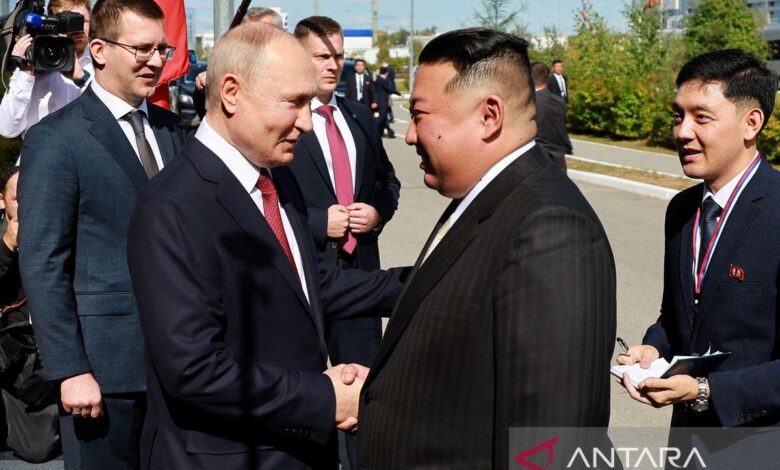
Russia Ukraine Invasion Putin A Deep Dive
Russia Ukraine invasion Putin: A devastating conflict with global repercussions, this war has shaken the foundations of international relations. From the historical context leading to the invasion to the global implications, this article will explore the multifaceted nature of this conflict, examining the motivations, impacts, and responses from all sides.
This exploration will delve into the intricate web of political, economic, and social factors that have contributed to this ongoing crisis. We’ll examine the historical relationship between Russia and Ukraine, the role of NATO, and the significance of key treaties and agreements. Furthermore, we’ll analyze the impact of the conflict on Ukraine’s people, infrastructure, and economy. We’ll also explore the various international responses, including sanctions and diplomatic efforts, as well as the global implications for energy markets, food security, and geopolitical landscapes.
Finally, we’ll examine Putin’s role in the conflict, his motivations, and the potential consequences of his actions.
Historical Context
The Russian invasion of Ukraine in 2022, a catastrophic event, unfolded against a backdrop of complex historical, political, and economic factors. The conflict is rooted in deep-seated historical tensions, the evolving geopolitical landscape of Eastern Europe, and the ambitions of Russian leadership. Understanding these factors is crucial to comprehending the current crisis.This invasion is not a sudden eruption; it’s a culmination of decades of intertwined relationships, shifting alliances, and conflicting national interests.
Analyzing the historical context allows us to better understand the motivations behind the actions of both Russia and Ukraine.
Timeline of Events Leading to the Invasion
The path to the 2022 invasion was paved by a series of events spanning decades. These events, both large and small, shaped the regional dynamics and ultimately contributed to the conflict.
- The collapse of the Soviet Union (1991): This event marked a significant shift in the geopolitical landscape, leaving Ukraine independent but with lingering ties to Russia. The question of Ukraine’s sovereignty and its relationship with Russia became a key element in the region’s future.
- The rise of Vladimir Putin and the strengthening of Russian nationalism (2000s): Putin’s ascent to power coincided with a growing sense of Russian nationalism and a desire to restore Russia’s global influence. This was accompanied by a reassertion of Russian interests in neighboring territories, including Ukraine.
- The 2004 Orange Revolution and the 2014 Euromaidan protests: These protests, fueled by a desire for closer ties with the European Union and a rejection of Russian influence, highlighted the deep divisions within Ukrainian society and the resistance to Russian encroachment.
- The annexation of Crimea by Russia (2014): This action, following the Euromaidan protests, was a significant escalation of Russian involvement in Ukrainian affairs and a clear violation of Ukrainian sovereignty. It signaled a determination to reshape the geopolitical map of Eastern Europe.
- The ongoing conflict in Donbas (2014-present): The conflict in the Donbas region of eastern Ukraine highlighted the profound human cost of the tensions between Russia and Ukraine. This prolonged conflict further destabilized the region and provided a pretext for further Russian military intervention.
Historical Relationship Between Russia and Ukraine
The relationship between Russia and Ukraine is deeply rooted in shared history, culture, and language. However, this shared heritage has also been marked by periods of tension and conflict.
- Ukraine’s historical connections with Russia: Ukraine has a long and complex history, including periods of both cooperation and conflict with Russia. The legacy of shared history, particularly under the Soviet Union, has created a complicated relationship that continues to this day.
- Differing perspectives on national identity: Ukraine’s desire for self-determination and its pursuit of a distinct national identity have been at odds with Russia’s vision of a close relationship between the two countries.
Role of NATO in the Region’s Geopolitical Landscape
NATO’s presence in Eastern Europe has been a point of contention in the relationship between Russia and the West. NATO’s eastward expansion, perceived by Russia as a threat to its security interests, has fueled Russian concerns and contributed to the escalation of tensions.
- NATO’s eastward expansion: The eastward expansion of NATO, following the collapse of the Soviet Union, has been a source of concern for Russia, who sees it as a threat to its security interests. This expansion has created a complex geopolitical situation in the region.
Significance of Treaties and Agreements
Several treaties and agreements have attempted to regulate the relationship between Russia and Ukraine, but these have been challenged or ignored in the past.
- Budapest Memorandum on Security Assurances: This agreement, signed in 1994, guaranteed Ukraine’s territorial integrity in exchange for its giving up nuclear weapons. This agreement’s failure to be respected by Russia highlights a critical breach of trust.
Evolution of Russian Leadership Under Putin
Vladimir Putin’s leadership has significantly impacted Russia’s foreign policy and its relationship with Ukraine.
- Putin’s policies toward Ukraine: Putin’s policies towards Ukraine have been characterized by a firm stance on Russian interests in the region. This has included a forceful response to any perceived threat to those interests.
Causes of the Conflict
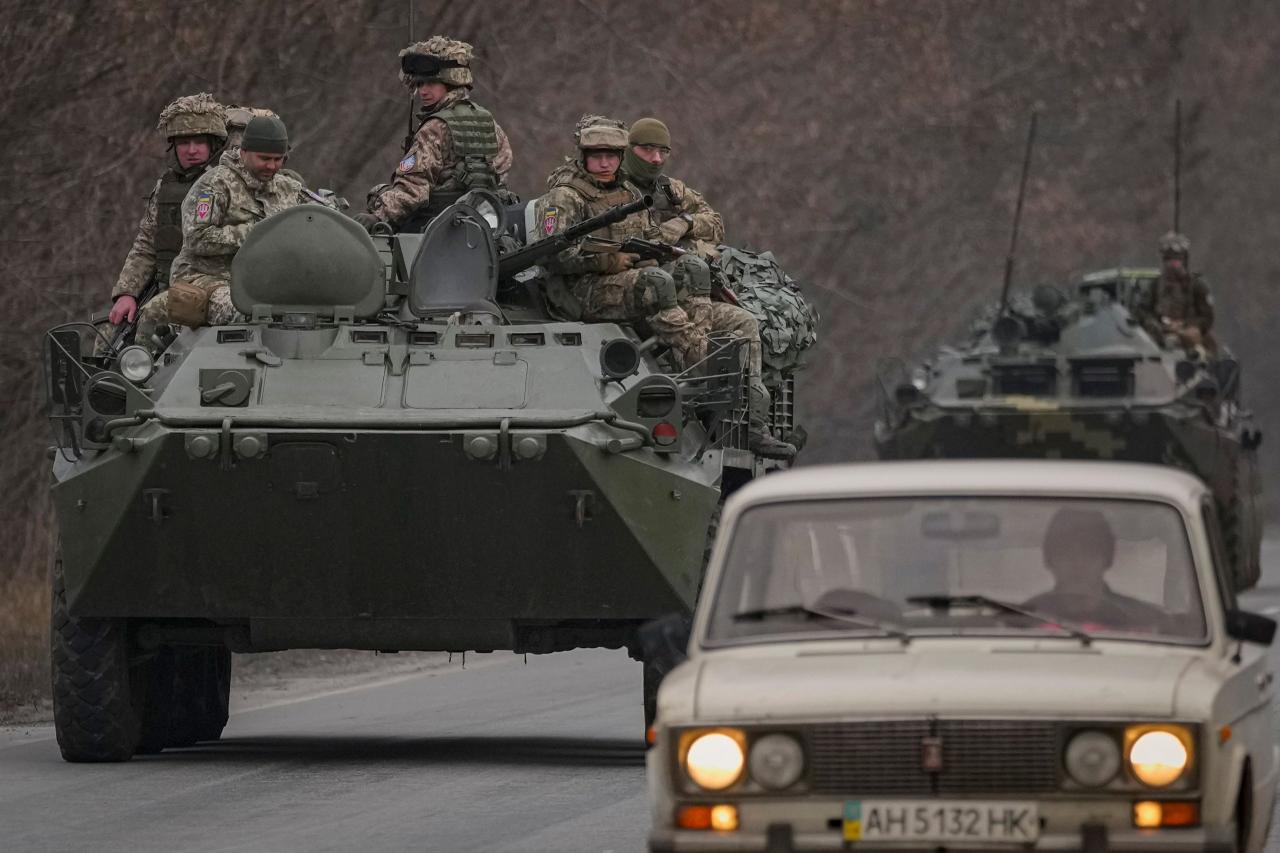
The Russian invasion of Ukraine in February 2022 unfolded as a complex event, rooted in a multitude of intertwined factors. Understanding the motivations behind the conflict requires examining the historical context, geopolitical tensions, and the interplay of national interests and ideologies. This analysis delves into the various perspectives on the invasion, highlighting the role of nationalism, ideology, economic interests, and the impact of Western sanctions.The invasion’s motivations are multifaceted, with interpretations differing significantly between Russia and the international community.
Russia’s narrative often centers on purported security concerns, while Ukraine and its allies highlight the violation of sovereignty and territorial integrity. Examining these diverging perspectives is crucial for comprehending the escalating conflict.
Nationalism and Ideology
Nationalism and ideology play significant roles in shaping the conflict. Russian President Putin’s pronouncements often invoke historical grievances and a perceived need to protect Russian-speaking populations in Ukraine. This rhetoric, coupled with a vision of a restored Russian sphere of influence, fuels a narrative of historical right and a perceived threat to Russian identity. Ukraine, on the other hand, emphasizes its independent identity and aspirations for European integration.
Economic and Strategic Interests
Russia’s strategic interests in the region, including access to warm-water ports and a counterweight to NATO expansion, are crucial aspects of the conflict. Ukraine’s geopolitical location and its potential to become a part of NATO pose a challenge to Russia’s security perceptions. Economic considerations, including energy supplies and trade routes, are also significant factors.
Perspectives from Both Sides
The claims made by both sides of the conflict differ drastically. Russia argues that its actions are aimed at preventing the expansion of NATO and protecting its security interests. It frames its actions as a necessary measure to protect Russian-speaking populations in Ukraine and prevent a hostile regime from emerging on its borders. Ukraine, conversely, asserts its right to self-determination and condemns the invasion as an act of aggression and a violation of international law.
Impact of Western Sanctions on Russia
Western sanctions imposed on Russia in response to the invasion have had a substantial impact on the Russian economy. These sanctions have targeted various sectors, including finance, energy, and technology, aiming to cripple Russia’s ability to sustain its military actions. The effectiveness of these sanctions in achieving their goals remains a subject of ongoing debate. The sanctions’ impact on the Russian economy has manifested in reduced trade, capital flight, and financial instability.
The ongoing Russia-Ukraine invasion under Putin’s leadership continues to dominate headlines. However, local politics are also stirring things up. Recent polls, like the Winthrop poll on Haley vs. Trump in South Carolina , show interesting shifts in public opinion. While these candidates’ campaigns might not directly impact the war, they certainly offer a glimpse into broader political dynamics and how the war itself is influencing those dynamics.
All this points back to the larger implications of the Russia-Ukraine conflict.
However, Russia’s resilience and its diversification of economic ties with other countries have presented significant challenges to the effectiveness of the sanctions. For example, the impact of sanctions on specific industries or sectors may vary. The sanctions’ impact on the Russian economy has also been observed in terms of reduced investment, and potential long-term implications on the Russian economy remain to be seen.
Impact on Ukraine
The unprovoked Russian invasion of Ukraine in February 2022 has had a devastating impact on the nation, upending lives, destroying infrastructure, and leaving an enduring humanitarian crisis. The scale of the destruction and displacement is staggering, impacting every facet of Ukrainian society, from the immediate physical effects to the long-term economic and social ramifications. The invasion exposed deep vulnerabilities and highlighted the importance of international cooperation in addressing such conflicts.The invasion brought swift and widespread destruction.
From bustling city centers to quiet rural villages, the relentless barrage of shelling and bombing has left a trail of devastation. The conflict has not only targeted military installations but also civilian infrastructure, including homes, hospitals, schools, and critical infrastructure like energy grids and transportation networks. The sheer scale of the damage and loss of life is staggering.
The ongoing Russia-Ukraine invasion, with Putin at its helm, has dominated global headlines. However, recent developments, like the Biden administration’s efforts to broker a cease-fire between Israel and Hamas, biden israel hamas cease fire , highlight the complex web of international conflicts. These parallel crises remind us that global instability is a multifaceted issue, and the actions of world leaders ripple across many fronts, ultimately impacting the situation in Ukraine.
Immediate Effects on the Ukrainian Population
The initial days and weeks of the invasion saw widespread panic and fear among the Ukrainian population. People were forced to flee their homes, often with little more than the clothes on their backs. This initial shock and disorientation contributed to a deep sense of vulnerability and uncertainty, leading to profound psychological distress for many. Evacuations became widespread, and the initial stages of the invasion witnessed mass exodus.
Destruction of Infrastructure and Civilian Casualties
The systematic targeting of civilian infrastructure has resulted in widespread destruction of homes, hospitals, schools, and critical infrastructure. The bombardment of cities and towns has caused immense suffering and loss of life among civilians. Reports of widespread destruction continue to emerge, highlighting the brutality of the conflict and the devastating impact on civilian populations.
The ongoing Russia-Ukraine invasion and Putin’s actions are deeply concerning, raising serious questions about global stability. Meanwhile, the tragic NYC subway shooting on the D train, as reported by CNN , highlights the unfortunate realities of violence in our cities. These events, though seemingly disparate, both underscore the complexities of human conflict and the urgent need for peaceful resolutions, similar to what’s needed to end the conflict in Eastern Europe.
Challenges Faced by Refugees and Displaced Persons
Millions of Ukrainians have been forced to flee their homes, seeking refuge in neighboring countries and within Ukraine itself. Refugees face significant challenges, including the loss of homes, livelihoods, and loved ones. Many are struggling with finding safe housing, food, and essential supplies. Language barriers and cultural differences also create significant obstacles for those seeking asylum. The sheer scale of the displacement crisis underscores the enormous humanitarian need and the urgent need for international support.
Impact on Ukraine’s Economy and Social Fabric
The war has had a devastating impact on Ukraine’s economy. Factories have been destroyed, businesses have closed, and agricultural production has been disrupted. The disruption of supply chains and trade routes has further exacerbated the economic crisis. The war has also had a profound impact on Ukraine’s social fabric. Families have been torn apart, communities have been shattered, and the sense of normalcy has been lost.
Humanitarian Crisis in Ukraine
The invasion has created a major humanitarian crisis in Ukraine. Millions of people have been displaced from their homes, and countless others have been injured or killed. The destruction of infrastructure, including hospitals and schools, has further complicated the humanitarian response. The crisis underscores the urgent need for international aid and support to address the critical needs of the Ukrainian people.
The scale of the crisis demands immediate and sustained international intervention to alleviate suffering and provide long-term support.
International Response
The international community’s response to the Russian invasion of Ukraine has been multifaceted and complex, encompassing a range of actions from sanctions to diplomatic efforts and humanitarian aid. Different nations have adopted varying approaches, often reflecting their own geopolitical interests and historical relationships with both Russia and Ukraine. The severity of the crisis and the potential for global escalation have led to a significant mobilization of international resources and efforts.
Sanctions Imposed on Russia
The imposition of sanctions on Russia aimed to cripple its economy and limit its ability to fund the war effort. These sanctions, including restrictions on financial transactions, trade, and asset freezes, targeted various sectors of the Russian economy, from energy to finance.
- Financial sanctions targeted key Russian banks and individuals, limiting their access to international financial systems. This severely restricted Russia’s ability to conduct international trade and obtain financing.
- Trade restrictions prohibited the import and export of certain goods, impacting Russian industries and limiting its access to vital resources.
- Energy sanctions, particularly targeting Russian oil and gas exports, aimed to reduce Russia’s revenue streams and potentially limit its ability to support the war.
Impact of Sanctions on Russia
The sanctions imposed on Russia have had a significant impact on its economy. There have been reports of a decline in GDP growth, increased inflation, and a devaluation of the ruble. However, the full extent and long-term consequences of these sanctions are still unfolding and remain subject to ongoing debate.
Diplomatic Efforts to De-escalate the Conflict
Numerous diplomatic efforts have been undertaken to de-escalate the conflict. These efforts have involved discussions and negotiations between various international actors, including the United Nations, the European Union, and individual nations. However, progress has been limited due to the conflicting interests and positions of the involved parties.
- International organizations, such as the United Nations, have played a role in facilitating dialogue between the warring parties, although with limited success.
- Individual nations, such as the United States, have engaged in bilateral talks and diplomatic missions aimed at de-escalating the situation.
Role of International Organizations in Providing Aid
International organizations, like the UNHCR and the World Food Programme, have played a crucial role in providing humanitarian aid to Ukraine and neighboring countries affected by the conflict. This aid has focused on providing essential supplies, shelter, and medical assistance to those displaced and affected by the war.
- The UNHCR has been instrumental in assisting Ukrainian refugees, providing temporary housing, food, and other necessities.
- The World Food Programme has helped to distribute food and other essential supplies to those affected by the conflict, especially in regions facing shortages.
Different Opinions on the International Response
There are varying perspectives on the effectiveness and appropriateness of the international response to the conflict. Some believe that the sanctions and diplomatic efforts have been insufficient to deter Russia’s actions, while others contend that the response has been comprehensive and impactful. These varying opinions often reflect differing geopolitical priorities and national interests.
Global Implications: Russia Ukraine Invasion Putin
The Russian invasion of Ukraine has rippled across the globe, triggering cascading effects on energy markets, food security, geopolitical alliances, and international relations. This conflict, far from being confined to the Eastern European theatre, has exposed vulnerabilities and anxieties in the global system, demanding careful consideration of its far-reaching consequences.
Impact on Global Energy Markets, Russia ukraine invasion putin
The war has dramatically impacted global energy markets, causing significant price fluctuations and reshaping energy reliance patterns. Russia is a major global energy supplier, and the sanctions imposed on it have led to supply disruptions and shortages. This has driven up prices for oil, natural gas, and other energy commodities. The resulting energy crisis has had a substantial impact on inflation, impacting consumer spending and economic growth in many countries.
The Russia-Ukraine invasion and Putin’s actions have sparked global concern, but what about the domestic political landscape? Analyzing the demographics of red and blue states, like in this helpful resource on red blue states demographics , could potentially offer some insights into differing viewpoints and support for international policies. Ultimately, understanding these factors could shed light on the complexities of Putin’s motivations and the global response to the conflict.
For example, European nations, heavily reliant on Russian gas, have experienced record-high energy costs and have sought alternative suppliers and energy sources. This has resulted in increased energy independence efforts for many nations.
Effects on Global Food Security
The war has significantly disrupted global food supplies, particularly for wheat, corn, and sunflower oil. Ukraine and Russia are major exporters of these commodities, and the conflict has hampered their ability to export these crucial food products. The resulting shortages have driven up food prices globally, potentially leading to food insecurity in vulnerable populations. For example, many developing nations heavily rely on these imports, and the price increases have had a direct impact on their populations, raising the risk of famine in some regions.
This demonstrates the interconnectedness of global food systems and the risks posed by disruptions in major agricultural production areas.
Potential for Escalation of the Conflict
The risk of escalation remains a significant concern. The conflict has the potential to draw in other nations, escalating the conflict beyond Ukraine’s borders. The involvement of proxy forces or the use of advanced weaponry could exacerbate the situation, leading to wider regional instability and global tensions. Historical precedents, such as the Cuban Missile Crisis, highlight the dangers of escalating conflicts.
The potential for miscalculation or unintended consequences is high. This underlines the need for careful diplomacy and de-escalation efforts to prevent further escalation.
Geopolitical Shifts Caused by the War
The war has prompted significant geopolitical shifts. Alliances are being re-evaluated, and new partnerships are emerging. The conflict has exposed vulnerabilities in existing international structures and highlighted the need for greater global cooperation and security mechanisms. For instance, some nations are reconsidering their reliance on Russia for energy and raw materials, leading to a reassessment of global supply chains.
This has led to a heightened focus on energy security and diversification strategies.
Summary of Long-Term Consequences of the Invasion
The long-term consequences of the invasion are still unfolding, but several key trends are emerging. These include heightened geopolitical tensions, increased global instability, and potential for further conflicts. The invasion has also exposed weaknesses in the international system’s ability to prevent and resolve conflicts, underscoring the need for a more robust and responsive global security architecture. The conflict has also accelerated the search for alternative energy sources and a reassessment of global supply chains, leading to a reordering of economic and political priorities.
Putin’s Role
Vladimir Putin’s motivations for the invasion of Ukraine are complex and multifaceted, deeply rooted in his perception of Russia’s historical role and its geopolitical standing. His actions are a culmination of years of rhetoric and strategic maneuvering, ultimately leading to the devastating conflict. Understanding Putin’s perspective is crucial to comprehending the ongoing crisis and its potential consequences.Putin views the conflict as a struggle for Russia’s historical destiny and a response to perceived threats to its security and influence.
He likely believes that Ukraine’s aspiration to join NATO poses an existential threat to Russia’s security interests. This perspective, coupled with a desire to restore Russia’s perceived global standing, has driven his actions.
Putin’s Perspective and Motivations
Putin’s perspective on the conflict is intertwined with his understanding of Russia’s historical role and its geopolitical standing. He likely believes that Ukraine’s aspirations to join NATO represent a direct threat to Russia’s security and influence. This perception is underpinned by a belief that Ukraine should remain within Russia’s sphere of influence. This view, combined with a desire to restore Russia’s global standing and prestige, likely influenced his decision-making process.
Putin’s Actions and Rhetoric Leading Up to the Invasion
Putin’s actions and rhetoric in the years leading up to the invasion progressively escalated tensions. He consistently articulated concerns about NATO expansion and Ukraine’s integration into the Western security alliance. His rhetoric painted a picture of Ukraine as a potential threat, and his actions, such as military exercises near the Ukrainian border, served as a demonstration of force.
This escalating rhetoric and military buildup culminated in the invasion.
Potential Consequences of Putin’s Decisions
The consequences of Putin’s decisions are far-reaching and deeply impactful. The conflict has led to a humanitarian crisis in Ukraine, causing immense suffering and displacement. Economically, the invasion has triggered global sanctions and disruptions, impacting energy markets and international trade. The long-term geopolitical ramifications are still unfolding, but the war has reshaped the global security landscape. The potential for further escalation and regional instability remains a serious concern.
Comparison to Past Russian Leaders
Putin’s actions can be compared to past Russian leaders who sought to expand or maintain Russia’s influence in Eastern Europe. However, the scale and nature of the current conflict, including the level of international condemnation, are unique. Putin’s actions differ significantly in their level of direct aggression and their implications for global security compared to previous historical examples.
Putin’s Influence on Russia’s Foreign Policy
Putin’s influence on Russia’s foreign policy is undeniable. He has shaped Russia’s approach to international relations, characterized by a focus on restoring Russia’s global standing and asserting its influence in its near abroad. His policies have fostered a more assertive and nationalistic stance in Russia’s foreign policy, often in opposition to Western interests. The invasion of Ukraine is a prime example of this approach.
Illustrative Content
This section delves into the practical aspects of the Russia-Ukraine conflict, offering a visual representation of key events, economic impacts, humanitarian efforts, and international responses. Tables, timelines, and lists provide a tangible understanding of the multifaceted crisis.
Timeline of Key Events
The following table Artikels significant events chronologically, highlighting the escalation of the conflict. Understanding the sequence of events is crucial to grasping the unfolding crisis and its far-reaching consequences.
The ongoing Russia-Ukraine invasion, with Putin at the helm, has understandably dominated headlines. However, it’s important to remember that other tragedies and crises unfold globally. For example, the news of a missing couple on a boat in Grenada, as reported in couple missing boat grenada , highlights the constant need for human compassion and rescue efforts.
Ultimately, the global stage continues to present a myriad of challenges, and the situation in Ukraine remains a major concern.
| Date | Event |
|---|---|
| February 24, 2022 | Russia launched a full-scale invasion of Ukraine. |
| March 2022 | Significant fighting erupted in various regions of Ukraine, including Kyiv. |
| April 2022 | International efforts to mediate a ceasefire began. |
| Ongoing | The conflict continues, with ongoing military actions and humanitarian crises. |
Economic Sanctions on Russia
This table illustrates the varying economic sanctions imposed on Russia by various countries. The sanctions, aiming to cripple Russia’s economy, have had a profound effect on global trade and financial markets.
| Country | Type of Sanctions | Specific Examples |
|---|---|---|
| United States | Financial sanctions, export controls | Restrictions on Russian financial institutions, ban on Russian oil imports. |
| European Union | Financial sanctions, export controls, travel restrictions | Embargoes on Russian oil, gas, and coal imports; asset freezes. |
| United Kingdom | Financial sanctions, export controls, asset freezes | Sanctions targeting specific Russian banks and oligarchs. |
Humanitarian Aid Organizations
A multitude of humanitarian aid organizations have been active in Ukraine. Their efforts are crucial in providing essential resources to civilians affected by the conflict.
- The International Committee of the Red Cross (ICRC): The ICRC is a neutral humanitarian organization that provides aid to victims of conflict worldwide, including Ukraine.
- Doctors Without Borders (Médecins Sans Frontières): This organization provides medical assistance to those affected by conflict and disaster, working in Ukraine to address the urgent health needs.
- UNICEF: UNICEF focuses on children and their well-being in conflict zones, offering support to Ukrainian children and families.
- World Food Programme (WFP): WFP provides food assistance to those facing food insecurity, including Ukrainian refugees and displaced people.
International Treaties Relevant to the Conflict
These treaties Artikel the international legal framework applicable to the conflict. Understanding these agreements helps to assess the actions of the parties involved and the legal ramifications of the situation.
- Charter of the United Nations: The UN Charter sets the foundations for international relations and the maintenance of peace.
- Geneva Conventions: These conventions protect the rights of civilians and combatants during armed conflict, outlining humanitarian standards.
- UN Charter on Human Rights: This document affirms fundamental rights and freedoms for all people, which have been violated in the conflict.
Different Opinions on NATO’s Role
Various perspectives exist regarding NATO’s role in the conflict. Understanding these different viewpoints is crucial to assessing the complex geopolitical landscape.
| Perspective | Arguments |
|---|---|
| NATO involvement exacerbates the conflict | NATO expansion is seen as a provocation to Russia, potentially escalating the situation. Further involvement might deepen the conflict. |
| NATO is essential for deterring further Russian aggression | NATO presence in the region is viewed as a deterrent against future Russian expansionist policies. |
| NATO involvement is a legitimate response to Russian aggression | Ukraine’s request for support is viewed as a valid response to Russia’s unprovoked attack. |
Visual Representation
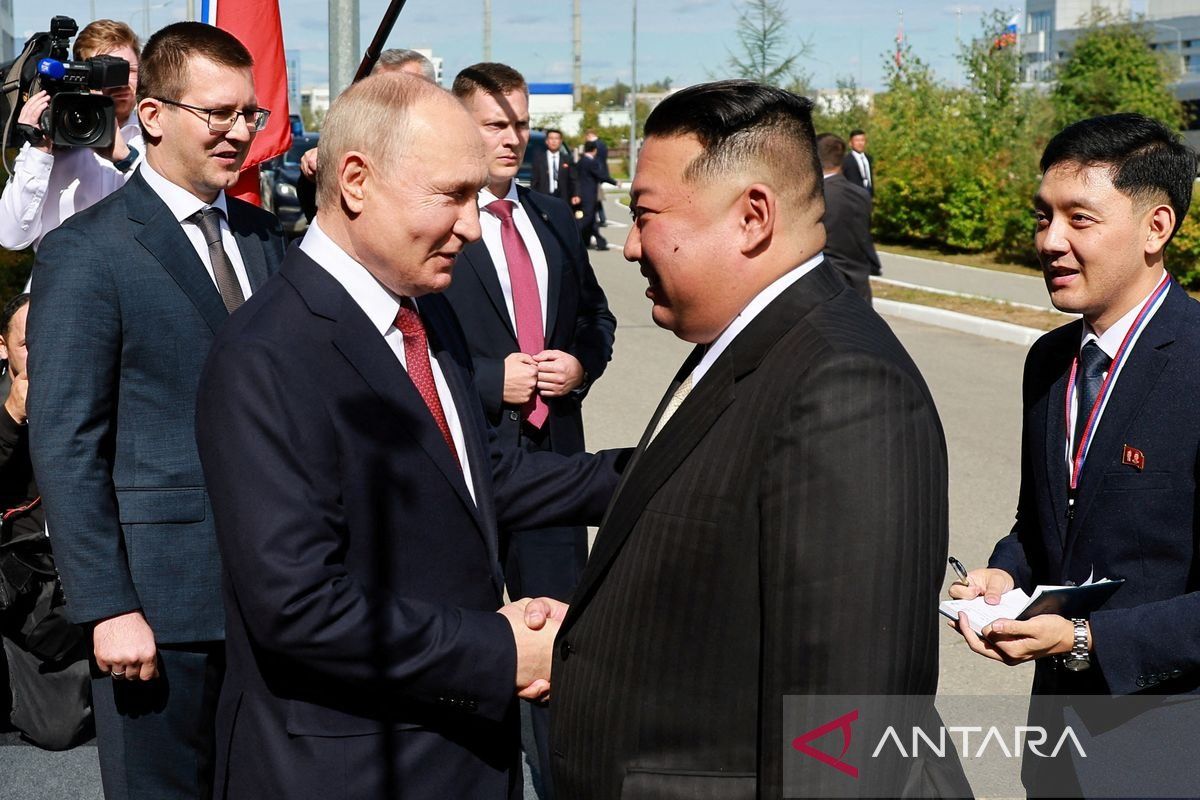
This section delves into the visual representations of the Russia-Ukraine conflict, offering infographics and charts to depict the geographical scope, economic sanctions, humanitarian aid, international responses, and global energy market impacts. These visual tools aim to provide a concise and impactful overview of the multifaceted crisis.The visual representations presented here are designed to make complex information more accessible and understandable.
They offer a snapshot of the conflict’s various dimensions, enabling viewers to grasp the scope and magnitude of the crisis in a single glance.
Geographical Location and Impact on Surrounding Regions
A map of Eastern Europe, specifically highlighting Ukraine and surrounding countries, will be central. Key areas of conflict, such as the contested regions in eastern Ukraine, will be clearly marked. The map will also show the flow of refugees from Ukraine to neighboring countries, depicting the displacement caused by the conflict. The impact on neighboring countries, including increased refugee flows and economic strain, will be indicated with different shades or icons.
The map will also show the proximity of Russia’s military bases and infrastructure, to further demonstrate the logistical and strategic context.
Economic Sanctions Imposed on Russia
A circular infographic will visually represent the sanctions imposed on Russia. Different sectors of the Russian economy (e.g., energy, finance, technology) will be depicted as segments of the circle, with each segment’s size proportionally representing the severity and breadth of sanctions targeting that sector. Specific examples of sanctions, like restrictions on Russian banks’ access to international financial markets, will be highlighted within each sector.
The cumulative effect of these sanctions, including reduced trade and investment opportunities, will be shown through the decrease in the overall size of the circle over time, visually representing the impact on Russia’s economy.
Humanitarian Aid Efforts in Ukraine
A flow chart will visualize the various humanitarian aid organizations and their activities. The chart will illustrate the different types of aid provided, including food, shelter, medical supplies, and financial assistance. The flow chart will trace the route of the aid from the donor organizations to the affected regions in Ukraine, indicating the distribution channels and logistical challenges encountered.
The different aid types will be color-coded for easy identification, and the number of people assisted will be included in the chart.
Responses from International Actors
A multi-layered pie chart will represent the different responses from international actors. Different sectors will represent different types of responses (e.g., diplomatic efforts, military aid, financial sanctions). The size of each sector will reflect the level of engagement of different nations and organizations in the conflict. Specific examples of countries imposing sanctions and providing military assistance will be noted within the relevant sectors.
A separate visual will be included to demonstrate the level of support from international organizations like the United Nations.
Impact of the Conflict on Global Energy Markets
A line graph will illustrate the fluctuation in global energy prices, specifically focusing on oil and natural gas. The graph will show the correlation between the conflict’s escalation and the corresponding price spikes. Historical data of energy prices before the conflict will be included for comparison, illustrating the magnitude of the price increases. Specific examples of countries affected by the price increases, particularly those heavily reliant on Russian energy imports, will be highlighted.
Outcome Summary
In conclusion, the Russia Ukraine invasion Putin conflict is a complex and multifaceted issue with far-reaching consequences. The war has exposed deep-seated geopolitical tensions, highlighted the fragility of international agreements, and underscored the devastating human cost of conflict. This analysis provides a comprehensive overview, offering insights into the historical context, causes, impacts, and responses to this devastating war. The future remains uncertain, but the lessons learned from this conflict will undoubtedly shape the global landscape for years to come.
Popular Questions
What was the role of NATO in the conflict?
NATO’s role is a complex and contentious issue. While Ukraine is not a member, NATO’s eastward expansion and its presence in the region have been a source of concern for Russia, contributing to the escalating tensions. Different perspectives exist regarding NATO’s influence and responsibility in the conflict.
What is the current status of the humanitarian crisis in Ukraine?
The humanitarian crisis in Ukraine continues to be a major concern. Millions have been displaced, and countless lives have been lost. The ongoing need for aid, both immediate and long-term, remains critical.
How have sanctions impacted Russia’s economy?
Sanctions have imposed significant economic hardship on Russia, affecting various sectors and leading to decreased trade and investment. The long-term impact of sanctions is still unfolding and subject to ongoing debate.
What are the different perspectives on Putin’s motivations?
Putin’s motivations are complex and contested. Some analysts point to historical grievances and strategic interests, while others emphasize the role of personal ambition and ideology. There is no single, universally accepted explanation for his actions.

